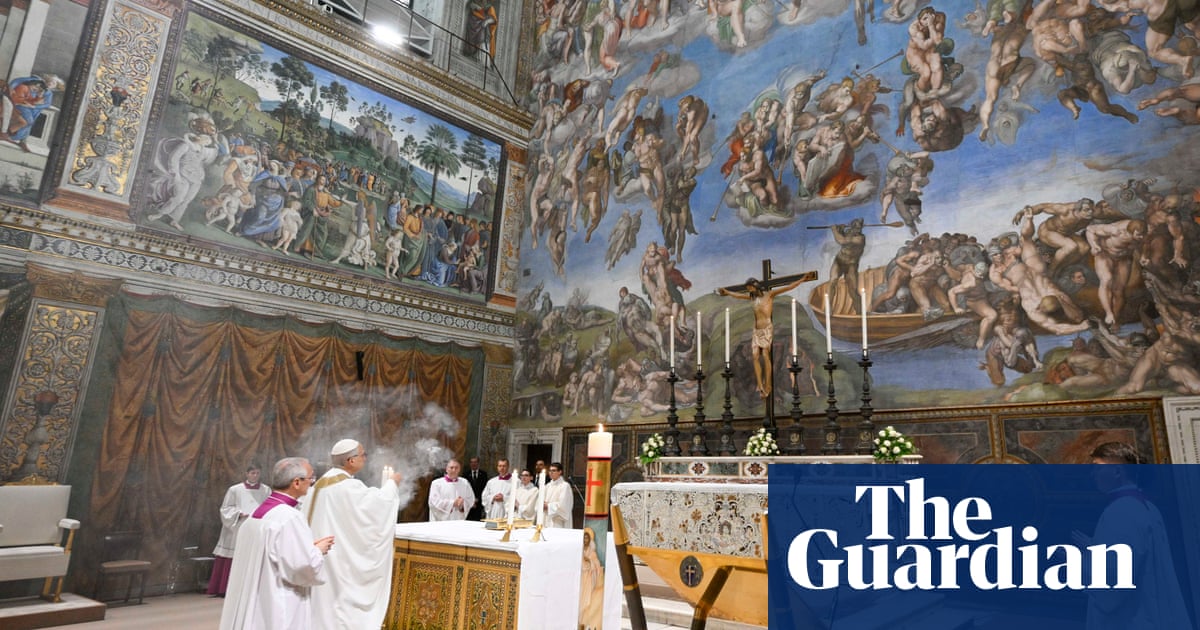Pope Leo XIV said he hoped to lead a Roman Catholic church “that illuminates the dark nights of this world” as he held his first mass as pontiff under Michelangelo’s ceiling frescoes in the Sistine Chapel.
The surprise election of Robert Francis Prevost, the first US pope, came after a conclave that lasted less than 26 hours, one of the shortest inmodern Catholic history.
During Friday’s mass with cardinals, Leo began his homily in English, before switching to Italian. In the English passage he quoted words from the psalms, saying: “I will sing a new song to the Lord, because he has done marvels.”
“Not just with me,” he continued. “But with all of us, my brother cardinals, as we celebrate this morning, I invite you to recognise the marvels that the Lord has done, the blessings that the Lord continues to pour out upon all of us.”
Switching to Italian, he said he hoped the church could “illuminate the dark nights of this world”. He said he would be a “faithful administrator” of the church, and that it should be judged by the holiness of its members and not “the grandeur of her buildings”.
In a later passage referring to evangelisation, Leo said there were many settings in which the Christian faith was considered “absurd, meant for the weak and unintelligent. Settings where other securities are preferred, like technology, money, success, power, or pleasure.”
He added: “These are contexts where it is not easy to preach the gospel and bear witness to its truth, where believers are mocked, opposed, despised or at best tolerated and pitied. Yet, precisely for this reason, they are the places where our missionary outreach is desperately needed.”
The pope and the 132 cardinals who elected him, from all over the world, will have lunch after the mass. The cardinals will then be free to return home.
The Chicago-born Prevost, 69, has been living in Rome since 2023, when Francis appointed him chief of the powerful Dicastery for Bishops, which oversees the selection of new bishops from around the world.
He made a surprise visit to the Sant’Uffizio palace, his home until the election, shortly after making his first address to the crowds gathered in St Peter’s Square on Thursday night. The pope stopped in the courtyard to pose for selfies with pilgrims, signing the autograph book of a child and telling them it was the first autograph he had signed as pope, the Italian press reported.
St Peter’s Square was markedly less crowded on Friday than on previous days, but there was no shortage of pilgrims processing behind wooden crosses to visit the basilica. Few people were paying attention to the mass, which was broadcast on big screens.
Maria Marino, a Catholic from New York, said she was thrilled an American had been chosen to succeed Pope Francis, who died in April at the age of 88. “I’m hopeful that he will reach across all people and bring us together in our faith,” she said.
She said Pope Leo XIV had “great respect” for his predecessor and his legacy, “but I think he’ll be his own leader … His spirit seems to be open and listening. I think he’ll be a pope for all people.”
Kerry Betts, from Victoria in Australia, said she thought Leo was “impressive and humble. They say he’s a moderate but I hope he doesn’t take the church backwards. I was happy that Pope Francis accepted LGBT people and women, so I’m hoping there’s no radical changes.”
The pope has inherited major challenges, ranging fromVaticanfinancial woes and divisions over whether the church should embrace LGBTQ+ Catholics and divorcees, to whether women should play a greater role in the church and tackling the widespread issue of clerical sexual abuse.
